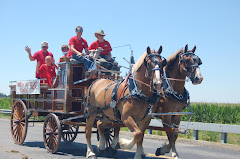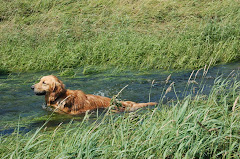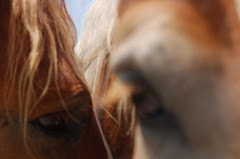Equine Herpesvirus
Other common names
EHV, Equine Rhinopneumonitis, EHV-1, EHV-4
Equine herpesvirus (EHV) is a highly contagious group of viruses that causes disease in horses worldwide. EHV is one of the most costly viral diseases in the equine industry due to its ability to affect many organ systems causing both economic and animal welfare losses. EHV is responsible for causing the neurologic form or equine herpesvirus myleoencephalopathy (EHM).
Frequently Asked Questions:
1. How do we handle horses returning from events where they might have been exposed to this infection?
For horses that might have been exposed to the risk of infection, there are some steps to take to mitigate the risk at their home facility. Even if these horses are returning home from events at which no disease was reported, and even if these horses appear healthy, precautions are needed at this time as these horses could bring it home and spread it at their home farm – this is the classic way this disease spreads:
• These horses should be isolated from any other horses when they return to their home facility. Isolation requires housing them away from other horses, using different equipment to feed, clean and work with them that is used with any other horses, and rigorous hygiene procedures for horse handlers (hand hygiene, wearing separate clothes when contacting the horses, etc.).
• These horses should have their temperature taken twice a day, as temperature is typically the first and most common sign of infection–horses with elevated temperatures (101.5 degrees Fahrenheit or greater) should be tested to find out whether they are shedding EHV-1.
• If a horse develops a fever and is found to be shedding EHV-1 then the level of risk to other horses on the premises increases significantly.
• Horses that do not develop fevers should be isolated for 14-21 days.
2. What do we do if we already have a potentially exposed horse on a farm?
It still makes sense to isolate this horse from other horses. Even though it might have already been in contact with them, start isolation procedures to stop further exposure. It is important to not mix horses from different groups to accomplish this. Try to isolate the suspect horse without moving other horses from one group to another– segregation of horse groups is the key, because this will help you reduce spread if an outbreak starts. Check temperatures of all horses on the farm twice daily (fever spikes can be missed if you check once daily). If fevers are detected, then test for EHV-1.
• Any horse with signs of a contagious respiratory disease should be quarantined or isolated. Horses should neither enter nor leave the premises. In the case of EHV, quarantine should last for at least three weeks.
• Mares that abort should be isolated from other mares.
• Do not share equipment or tack among infected horses and normal horses on the facility.
• Proper hygiene should be implemented among horse handlers. Wearing gloves, thorough hand washing and disinfecting footwear can minimize the spread of the virus. Sick horses should be handled last.
3. Is there any value to using booster vaccinations against EHV-1 at this time?
Unfortunately, there is no evidence at this time that current EHV-1 vaccines can prevent EHM.
The more potent EHV-1 vaccines have been shown to reduce nasal shedding and in some cases reduce viremia and possibly lessen the severity of EHM. These products might have some theoretical value against EHM (by reducing viremia), and certainly against spread of the virus.
At this time, the Arthur Veterinary Clinic is recommending vaccinating against EHV-1 with Pneumabort K if your horse is traveling to a show, breeding farm or equine event where contact with other horses may occur.
General Information on EHV
Herpesviruses are a family of viruses which cause disease in both animals and humans. These viruses are species specific, meaning the equine herpesvirus cannot infect humans and the human herpesvirus cannot infect horses. Herpesviruses have the ability to produce a latent infection meaning the virus can remain dormant in the animal without producing any visible symptoms. This results in an inexhaustible reservoir of virus for continual transmission of infection among horses.
There are five types of herpesviruses (numbered EHV-1 through EHV-5) associated with illness in the domestic horse. Of the five types, EHV-1 and EHV-4 are the most common and detrimental.
EHV-1: Causes respiratory disease, abortion, neurologic disease and disease in the newborn foal. Young horses under the age of three which are housed in close confinement such as racetracks and show barns are most commonly affected with the respiratory form. EHV-1 also causes abortions in broodmares during the last four months of gestation. The neurologic form of EHV-1 is seen with increasing frequency and is the most devastating form. Foals born with EHV-1 rarely survive.
EHV-4: Causes an upper respiratory disease in young horses. Respiratory disease is not usually severe but loss of performance can be significant.
Most horses have been infected with EHV by two years of age. The initial exposure can occur in foals from contact with their mothers. The virus can then become latent or inactive in the foal’s body and it becomes a life-long carrier, showing no clinical signs. However, the virus can become reactivated during times of stress such as weaning, long-distance hauling or strenuous exercise and these horses can then spread the virus to other horses. Most mature horses develop some immunity through repeated natural exposure and become less susceptible to respiratory disease caused by EHV.
The incubation period of EHV is 2-10 days after infection until clinical signs appear. EHV is spread by several different routes including:
• Respiratory: A recently infected horse spreads the virus to other horses by direct contact of respiratory secretions or from infective viral particles being picked up in the air. The virus can be shed for 7-10 days from an infected horse. Infected foals are highly contagious. Mares can abort from two weeks to several months following exposure and most likely acquire the virus via the respiratory route.
• Indirect Contamination: EHV can live for days in the environment and be spread through the use of contaminated tack, handlers or equipment or from an aborted fetus and its associated tissues and fluids.
• In Utero: The virus can cross the placenta from an infected mare to her unborn foal.
Clinical signs
Respiratory-These signs can be mild to severe and include a high fever, nasal discharge, loss of appetite, lethargy, increased respirations, cough and ocular discharge. Secondary bacterial infections and pneumonia can occur.
Abortion-Mares that abort due to EHV seldom show clinical signs. The placenta is usually expelled with the aborted fetus still in the amniotic sac. One to two mares may abort in a group or abortion storms (a high number of abortions in a herd) can occur.
Neurologic-This form produces weakness of the hind limb muscles causing incoordination, gait abnormalities and inability to rise from a sitting position. These horses frequently develop urinary incontinence. Horses can become paralyzed and unable to rise. Older horses are more likely to develop the neurologic form of EHV.
Newborn Foals-Foals born with EHV are very weak and suffer from severe pneumonia. These foals usually die within 1-2 days of birth.


































